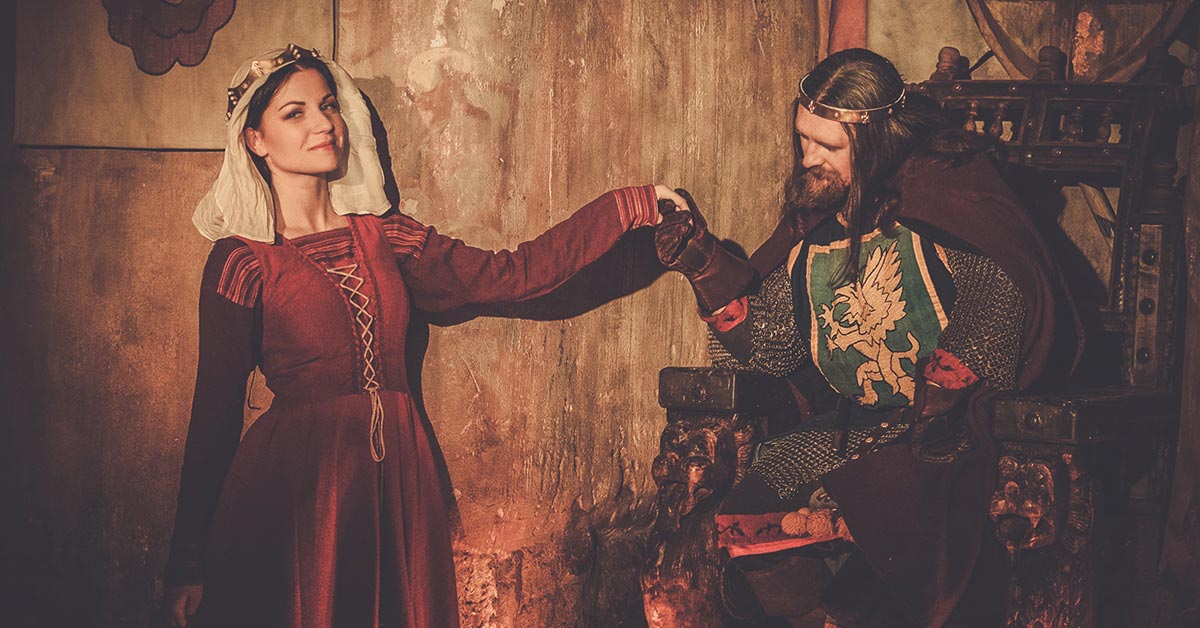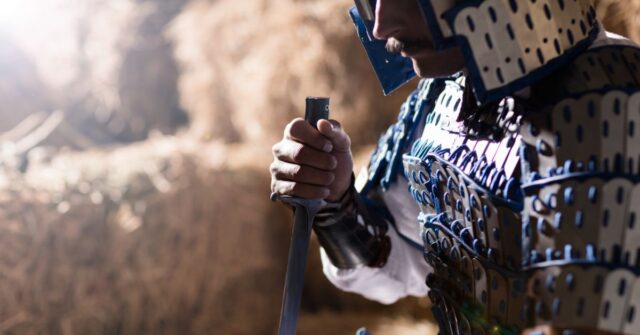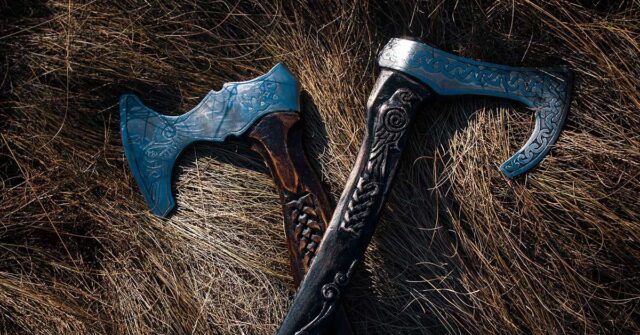In popular culture, Vikings are often depicted as fierce, barbaric warriors with horned helmets, wild hair, and unkempt beards.
However, historical evidence paints a much different picture of these Scandinavian seafarers.
In this article, we will delve into the true appearance of Vikings, exploring their physical characteristics, clothing, armor, and even their tattoos.
Join us as we uncover the realities of Viking life and dispel the myths that have long shrouded their true image.
Physical Characteristics
Vikings were a diverse group of people, and their physical characteristics varied depending on their region of origin.
Generally, they were of a stocky build with a muscular physique, developed through their labor-intensive lifestyle.
They had a range of hair and eye colors, with blonde and red hair being relatively common, as well as blue and brown eyes.
While exact heights varied, they were typically taller than their contemporaries in other parts of Europe.


Height and Build
Contrary to the belief that Vikings were all towering giants, archaeological findings show that they were of average height for their time.
Men typically stood between 5 feet 7 inches and 5 feet 11 inches, while women were generally between 5 feet 2 inches and 5 feet 6 inches.
Vikings were known for their strong, muscular builds, a result of their physically demanding lifestyle, which included farming, sailing, and, of course, raiding.
Hair Color and Style
Historical sources and genetic evidence suggest that Vikings exhibited a variety of hair colors, including blond, red, brown, and black.
Hair color may have varied by region, with blond hair being more prevalent in Scandinavian countries.
Hairstyles and grooming were important aspects of Viking culture, with both men and women taking care of their appearance.
Common Hair Colors
Blond hair was indeed common among Vikings, but it was not the only hair color present in their population. Red and brown hair were also prevalent, while black hair was rarer.
Hair color could also change over time due to environmental factors, such as sun exposure, and the use of certain hair care products.
Hairstyles and Grooming
Vikings took pride in their grooming habits, often using combs, tweezers, and razors made from bone or iron.
Men typically wore their hair long, sometimes pulled back or braided, while women often sported long braided hairstyles.
Some sources even suggest that Viking men may have occasionally shaved the sides or back of their heads in a style similar to the modern undercut.
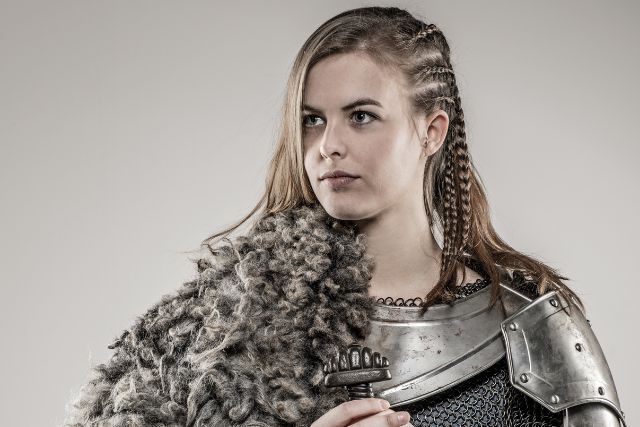

Facial Hair
Facial hair was a prominent feature among Viking men, and they often sported impressive beards. However, contrary to popular belief, their beards were well-maintained and groomed.
Long, full beards were a sign of maturity and status, while mustaches were also common. It is worth noting that not all Viking men had facial hair, and some may have been clean-shaven.
Eye Color
Vikings had a variety of eye colors, including blue, green, and brown. Blue eyes were particularly common, as they are among modern Scandinavians.
The prevalence of blue eyes among Vikings can be traced back to their genetic makeup, which included a high frequency of the gene responsible for blue eye color.
Clothing and Attire
The clothing worn by Vikings was designed for practicality and functionality, reflecting the harsh environment and lifestyle of the time.
Made from locally available materials such as wool, linen, and leather, their garments were well-suited to their needs and were often adorned with natural dyes and simple patterns.
In this section, we’ll explore the materials used in Viking clothing, as well as the everyday garments worn by both men and women, along with footwear and accessories that completed their attire.
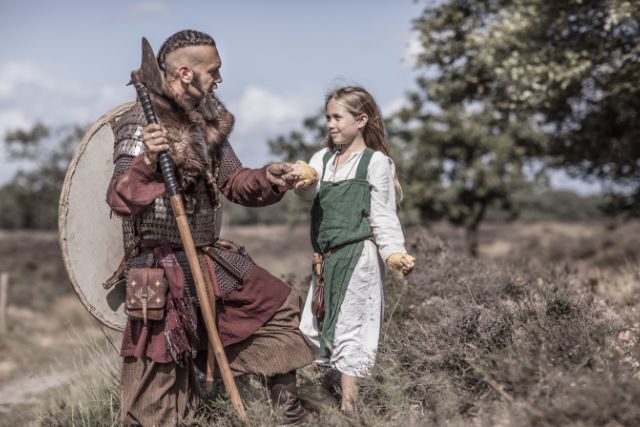

Material and Manufacturing
Viking clothing was practical and well-suited for their climate and daily activities.
Wool, linen, and leather were common materials used in the production of clothing, with wool being the most prevalent due to its warmth and durability.
Vikings also used natural dyes to add color and patterns to their garments.
Wool, Linen, and Leather
Wool was the primary material used in Viking clothing due to its insulating properties and availability.
Linen, made from flax plants, was also used for lighter garments, such as underclothes and summer wear.
Leather, sourced from both domestic and wild animals, was utilized for belts, shoes, and other durable items.
Dyeing and Patterns
Vikings used natural dyes made from plants, insects, and minerals to color their clothing. Common colors included red, yellow, blue, green, and brown.
Patterns and designs were created using weaving techniques, embroidery, or tablet weaving for decorative bands and trims.
Wealthier individuals often wore more elaborate and colorful garments as a display of their status.
Everyday Clothing
Viking clothing was designed for functionality, with the aim of keeping the wearer warm and dry in the harsh Scandinavian climate.
Men and women both wore layers of clothing, which could be adjusted according to the weather and activity level.
Men’s Clothing
Typical male Viking attire included a long-sleeved tunic, trousers, and a cloak. Tunics were often knee-length and made of wool or linen.
Trousers were either full-length or knee-length and could be tightened with a drawstring or belt.
Cloaks were generally rectangular, made of thick wool, and fastened with a brooch or pin at the shoulder.
Women’s Clothing
Viking women typically wore a long, ankle-length dress or tunic, often with a sleeved underdress made of linen.
Over the dress, women wore a woolen apron-like garment called a “hangerok,” which was held up by a pair of brooches at the shoulders.
Women also wore cloaks similar to those worn by men, as well as head coverings such as scarves or caps.


Footwear and Accessories
Vikings wore a variety of shoes and boots, often made from leather or hide. Shoes were usually simple in design, consisting of a single piece of leather folded and stitched together.
Boots provided additional warmth and protection and could be knee-high or ankle-high, with some featuring fur lining.
Shoes and Boots
Viking footwear was typically made from leather, with soles constructed from thicker and more durable hide.
Shoes and boots were often fastened with leather straps or toggles, and the design varied depending on the wearer’s occupation, status, and region.
Some Vikings even wore waterproof shoes made from seal or walrus skin for wet environments.
Belts, Jewelry, and Other Accessories
Vikings adorned themselves with various accessories, such as belts, brooches, and jewelry.
Belts were typically made of leather and could be decorated with metal fittings, while brooches were used to fasten cloaks or other garments.
Jewelry, such as necklaces, bracelets, and rings, was crafted from materials like silver, bronze, and glass beads.
Wealthy individuals often wore more intricate and ornate accessories as a symbol of their status.
Armor and Weapons
Viking warriors were known for their prowess in battle, and their armor and weapons played a crucial role in their combat effectiveness.
Contrary to popular belief, horned helmets were not part of Viking armor, instead, they used practical helmets and body armor designed for protection.
In this section, we’ll delve into the types of armor and weapons used by Vikings, including helmets, body armor, shields, swords, axes, spears, and bows, and dispel some common myths associated with their appearance on the battlefield.
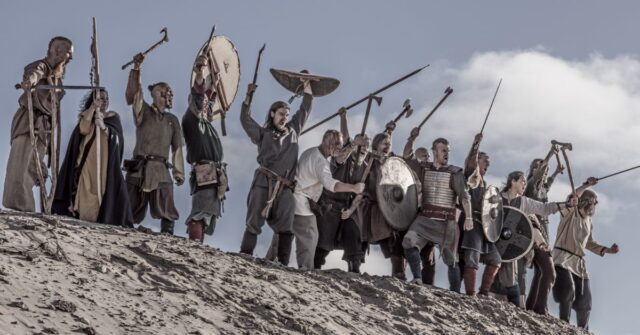

Helmets
Contrary to popular myth, Viking helmets did not have horns. Instead, they were practical, functional pieces of armor designed to protect the wearer’s head.
Viking helmets were typically made from iron and featured a conical or rounded shape with a simple nose guard and a sturdy browband for added strength.
Types of Helmets
There were several types of helmets worn by Vikings, including the Spangenhelm, which was made of metal plates riveted together, and the more sophisticated Gjermundbu-style helmet, which featured a single-piece metal skull cap with additional protective elements, such as a chainmail curtain to protect the neck and shoulders.
Helmets were not worn by all Vikings, as they were expensive and reserved for wealthier warriors or those of higher status.
The Myth of Horned Helmets
The popular image of Vikings wearing horned helmets is a misconception that can be traced back to the 19th century when artists and playwrights romanticized the Viking image.
In reality, horned helmets would have been impractical and potentially dangerous in battle, as they could be easily grabbed by opponents, compromising the wearer’s safety.
Body Armor
Body armor was not worn by all Viking warriors, as it was costly and cumbersome.
However, those who could afford it wore chainmail or lamellar armor, which provided protection without overly restricting movement.
Chainmail was made of interlocking iron rings, while lamellar armor consisted of small, overlapping metal plates sewn onto a leather or fabric backing.


Chainmail and Lamellar Armor
Chainmail was the most common form of body armor among Viking warriors, offering a balance between protection and flexibility.
Lamellar armor, although less common, provided additional protection by distributing the force of a blow across multiple overlapping plates.
Both types of armor were time-consuming and expensive to produce, making them accessible only to wealthier or higher-ranking warriors.
Shields
Viking shields were a crucial part of their defensive arsenal, used not only for protection but also for striking and pushing opponents.
The most common type of shield was the round shield, made from wooden planks and covered with leather or canvas.
A metal boss in the center protected the user’s hand and could be used offensively in close combat.
Round Shields and Their Significance
Round shields were a symbol of the Viking warrior and played an essential role in their tactics and fighting style.
These shields were designed to be lightweight and versatile, allowing warriors to quickly adapt to different situations on the battlefield.
Round shields were often painted with geometric patterns or simple designs, which may have represented the individual warrior or their group affiliation.
Weapons
Vikings were skilled in the use of various weapons, including swords, axes, spears, and bows. Swords were a status symbol, as they were expensive and difficult to make.
Axes were more common, with the bearded axe being a popular choice due to its versatility in both combat and everyday tasks.
Spears were widely used, as they were easy to produce and effective in both close and ranged combat.
Bows and arrows were employed for hunting and warfare, with the longbow being the most common type.


Swords, Axes, and Spears
Viking swords were typically double-edged, with a wide blade and a tapered point designed for slashing and thrusting.
Axes were often single-edged and could be used for chopping, hacking, and even hooking an opponent’s weapon or shield.
Spears featured a long wooden shaft and a metal spearhead, which could be used for thrusting, slashing, or throwing.
Bows and Arrows
Viking archers used longbows made from yew, ash, or elm, with a draw weight of around 50 to 60 pounds.
Arrows were typically made from wood, with fletchings of feathers and metal or bone arrowheads.
The design of the arrowheads varied depending on their intended use, with broadheads for hunting and more narrow, pointed heads for penetrating armor in warfare.
Skilled archers were highly valued on the battlefield and could provide effective long-range support for their fellow warriors.
Tattoos and Body Modification
While evidence of tattoos and body modifications among Vikings is limited, historical accounts and recent discoveries suggest that they may have been part of their culture.
Tattoos could have held personal, religious, or cultural significance, and body modifications such as piercings may also have been practiced.
In this section, we will explore the possible cultural significance of tattoos and body modifications among Vikings, as well as potential designs, placement, and techniques used in their creation.
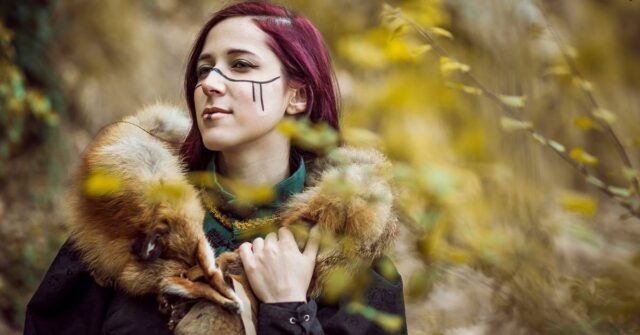

Cultural Significance
Although definitive evidence of Viking tattoos is scarce, there are historical accounts and modern archaeological discoveries that suggest the presence of tattoos among Viking populations.
Tattoos may have held cultural, religious, or personal significance and could have been used to mark allegiance, commemorate important events, or identify one’s profession or social status.
Tattoo Designs and Placement
The exact designs and patterns of Viking tattoos are difficult to determine, as they have not survived in the archaeological record.
However, based on historical accounts and the artistic styles of the time, it is likely that their tattoos featured geometric patterns, knotwork, and animal motifs inspired by Norse mythology.
Tattoo placement may have varied depending on the individual, with tattoos adorning arms, legs, torsos, and even faces.
Piercings and Other Body Modifications
Although evidence for Viking piercings is also limited, it is possible that some individuals wore earrings or other forms of body adornment.
Other body modifications, such as scarification or branding, may have been practiced, but definitive evidence is lacking.
It is important to remember that Viking culture was diverse, and practices likely varied between different groups and regions.
Conclusion
As we have explored in this article, the true appearance of Vikings is far removed from the horned-helmet-wearing, unkempt image often portrayed in popular culture.
In reality, Vikings were well-groomed, adorned in practical clothing, and skilled in the use of various weapons and armor.
Their physical appearance was as diverse as their culture, reflecting a rich history and a complex society that extended far beyond the stereotypes of pillaging and plundering.
Relevance of Viking Aesthetics in Modern Culture
Understanding the true appearance and aesthetics of Vikings not only helps us to appreciate their history and culture more accurately but also offers insight into how these ancient people continue to influence modern fashion, art, and design.
From contemporary hairstyles and grooming habits to clothing and accessories, the legacy of the Vikings can still be seen in various aspects of our lives today, reminding us of the enduring appeal of these fascinating seafarers.

